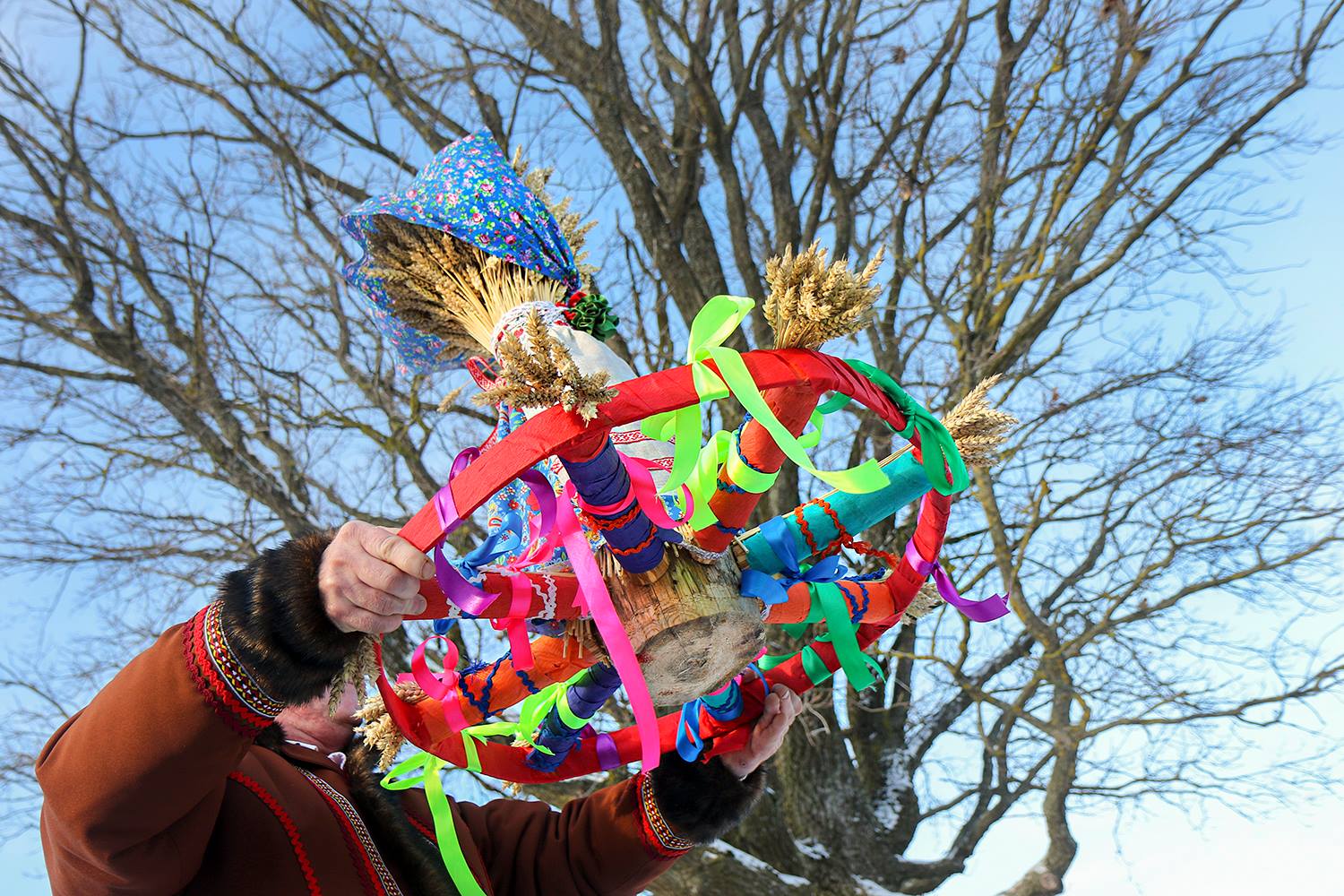The celebration of Kolyada lasted from December 25 to January 6. This time was filled not only with religious rites, but also with various folk rituals and amusements.
Rituals
Since ancient times, there has been a tradition of caroling, when dressed-up young people went from house to house singing holiday songs and skits. In their performances, young men and women glorified Christ and expressed good wishes to the hosts. Often, carolers took a bag of grain with them and scattered the seeds in the huts. This was a kind of reserve for a rich harvest in the new year.
A star was an essential attribute of caroling. Initially, in folk culture, it symbolized the solstice. With the advent of Christianity, this element acquired a new meaning: it reminded us of the Star of Bethlehem, which announced the birth of Christ.
One of the central characters of the carnival was the She-Goat. A young man was usually dressed as one. The costume was a sheepskin coat turned inside out, and the horns were made of vines or straw and attached to a hat. This character symbolized well-being and prosperity. "Where the She-Goat goes, the rye is born," sang the carolers. The She-Goat's companions were musicians and the Grandfather, whose role was played by a young guy with an artificial beard made of hemp or a bunch of flax.

As a rule, the She-Goat performs a lively dance for the hosts to the songs of carolers, and then "dies". To revive the character, the household members must generously present the guests: "for horns - two pastries, and for a boaster - a piece of lard". Having received the treat, the She-Goat rises and thanks for the. As a farewell, the young people wish the family health, wealth and well-being.
Often they brought a Mare with them. Its owner asked the hosts of the house for money "for oats". Carolers and a Bear were brought along, who performed various tricks, for which he received rich treats. There were also such characters as a Stork, a Doctor, a Gypsy, an Officer, an Angel, and Death.
In Western Polesie, the main characters of the carnival performance were the Horse and the Rider. The ritual with the participation of these characters was revived in Davyd-Gorodok. And in Semezhevo agro-town, Kopyl district, the Christmas carol ritual-game "Tsars" was restored. Participants, dressed in white suits and high hats, march through the town, go into houses and act out the drama "Tsar Maximilian" there. This tradition is included in the UNESCO List of Intangible Cultural Heritage.
In some districts, the custom of "Dragging Kolyada to the oak tree" has survived to this day. This ritual concluded the Kolyada cycle. As a rule, after a noisy celebration, villagers pulled a harrow or a decorated sheaf of straw onto a mighty tree. The higher the Kolyada is, the richer the harvest will be.

Games
On Kolyada days, young people gathered for parties, where they not only sang and danced, but also played games. "Marriage of Tereshka" was the most common in the north of Belarus. This fun activity helped to find a partner. The game was a kind of wedding rehearsal. On command, each guy approached the girl he liked and put his hat on her. If the sympathy was mutual, then the girl remained in the headdress. Otherwise, she threw off her hat and ran away from the guy. Couples created at the beginning of the evening received a joking blessing from the adults who played the role of father and mother. Then songs were played, games began, where young men competed in agility and strength. After that, everyone sat down at the festive table. The youth went out late at night. Participating couples often later got married and held a real wedding.
The game "Lizard" was popular, the roots of which go back centuries. It really resembles a pagan sacrifice to a dragon from the underworld. Girls in wreaths to songs lead a round dance around the lizard, and he takes the wreaths from the participants. Then the mythological character tries to make the girls laugh - only those who refrained from laughing get their wreath back.
They played at parties and in "The cat is baking". Boys and girls prepared a figure of a cat from the dough in advance, to which they stuck a sausage instead of a tail. This delicacy was suspended from the ceiling, and the participants were asked to jump up and take a bite. The fun continued until someone plucked the entire flour cat. If it was successful, the "trophy" was shared among all those present. The evening continued with feasting and dancing.
Batleika - folk puppet theater
During the festive period, they also staged performances of the folk puppet theater - batleika. It is a wooden box with one or two tiers, where toy characters are placed. The drama "Tsar Herod" was performed most often, but they also performed everyday skits in which people's vices were ridiculed.